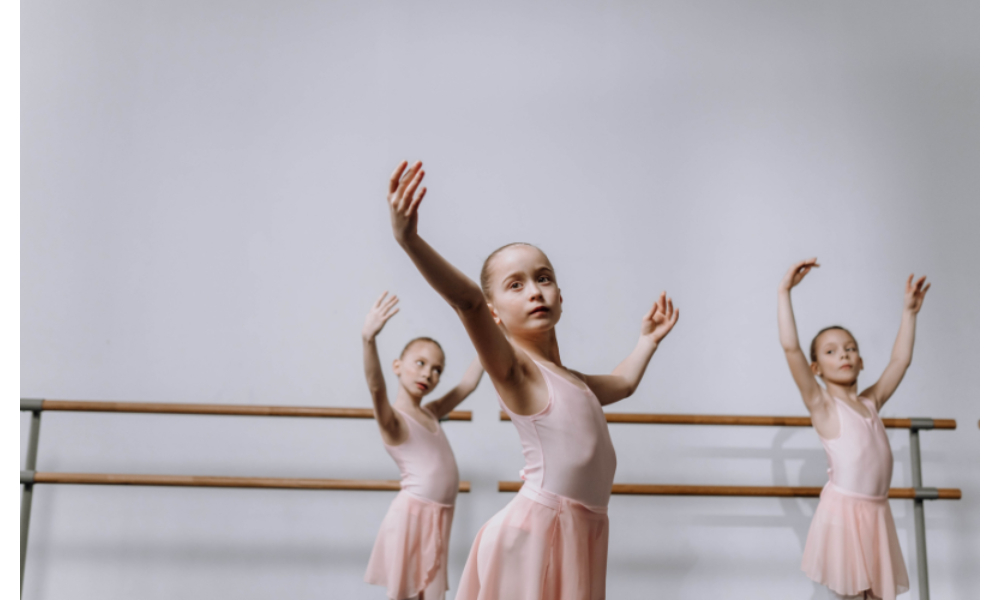You Need to Know
Ballet training is renowned for its strength, endurance, and accuracy. The systematic movements used in a ballet dancer’s practice improve flexibility, balance, and general physical fitness. Regardless of your experience level, knowing the essential dance routines will help you get ready for training. Understanding these exercises can also help you perform better and avoid injuries if you intend to enrol in a ballet class in Singapore.
Barre Work: Foundation of Strength and Stability
Barre exercises form the foundation of any ballet workout. These movements help build strength, stability, and muscle control. Common barre exercises include:
- Plies – A fundamental movement where dancers bend their knees while maintaining proper posture. It enhances leg strength and improves flexibility.
- Tendus – This move involves extending the foot along the floor and pointing the toes. It improves foot articulation and coordination.
- Rond de Jambe – A circular leg movement that enhances hip mobility and control.
- Frappes – A quick striking motion of the foot against the floor to build ankle strength and speed.
- Grand Battements – High leg kicks that develop flexibility and dynamic strength.
Barre work is essential for building technique and muscle endurance. These exercises prepare dancers for more complex movements performed in the centre of the studio.
Centre Work: Enhancing Coordination and Balance
After the barre routine, dancers move to the centre for exercises that focus on balance, posture, and coordination. Some of the key centre movements include:
- Adagio – A slow and controlled series of movements that test balance and strength.
- Pirouettes – A spinning movement requiring precise coordination and core control.
- Petit Allegro – Small, fast jumps that develop agility and footwork.
- Grand Allegro – Large jumps and leaps that demand explosive power and endurance.
Centre work challenges dancers to maintain stability without the support of the barre. It strengthens core muscles, improves spatial awareness, and refines movement control.
Jumps and Leaps: Building Power and Agility
Jumps and leaps are a critical part of any ballet dancer workout. They require lower-body strength, proper alignment, and explosive energy. Some of the main jump exercises include:
- Sautés – Basic jumps where dancers push off the floor and land softly with bent knees.
- Jetés – A leap from one foot to the other, commonly seen in dynamic choreography.
- Assemblés – A movement where both legs come together mid-air before landing.
- Sissonne – A jump that begins with both feet and lands on one foot, testing balance and strength.
Jump training helps dancers develop endurance, cardiovascular fitness, and overall body coordination. Regular practice is necessary to execute these movements with control and precision.
ALSO READ: 5 Unspoken Rules of Ballet Class
Floor Exercises: Strength and Flexibility Conditioning
Ballet training includes floor exercises that target strength and flexibility. These exercises help dancers maintain a strong and injury-free body. Common conditioning moves include:
- Core Workouts – Sit-ups, planks, and leg raises to build abdominal strength for better balance.
- Flexibility Drills – Splits, hamstring stretches, and backbends to improve range of motion.
- Resistance Training – Bodyweight exercises like lunges and squats to enhance leg power.
Strength and flexibility are essential for ballet performance. Dancers may struggle with demanding choreography and increased injury risks without a solid foundation.
Cool-Down and Recovery: Preventing Injuries
After an intense ballet workout, cool-down exercises help the body recover. Stretching is a key part of this phase, preventing muscle tightness and improving flexibility. Some efficient cool-down exercises include:
- Gentle Stretches – Holding stretches for the hamstrings, calves, and back to release tension.
- Breathing Exercises – Controlled breathing to relax the nervous system and lower heart rate.
- Foam Rolling – Using a foam roller to massage tight muscles and enhance recovery.
Proper recovery ensures dancers maintain performance levels and avoid long-term injuries. Ballet places high physical demands on the body, making post-workout care essential.
Conclusion
A ballet workout involves structured movements that build strength, flexibility, and endurance. Jumps increase agility, centre work improves coordination, and barre movements build foundational technique. Maintaining optimal performance then requires both strength training and recovery regimens. Getting ready for these common ballet moves will help you adjust to the level of training, particularly if you’re taking a ballet class in Singapore. Remember, ballet technical mastery requires consistent practice and appropriate conditioning.





